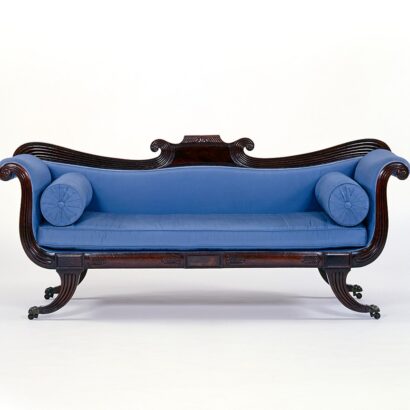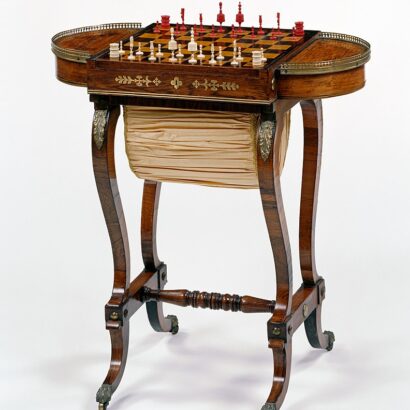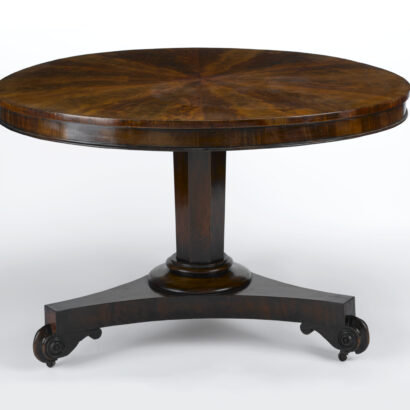By the 1830s, the drawing room was a female domain, used primarily by the women of the house for activities deemed appropriate, like reading or painting. There was also a growing interest in interior design, with a number of influential publications giving advice.
It is mid-afternoon and a mother and her daughters are gathered in the drawing room.
The mother is relaxing on the sofa, reading her monthly magazine and catching up on the latest fashions.
At the central table, her eldest daughter is practising her watercolours, while the younger daughter is writing a letter to her cousin who lives on the other side of London.
She has set up the chessmen on the games table at the back of the room, ready to challenge her brother to a game of chess when he comes home from school.
Objects to look out for

Sofa, about 1820
Sofas became common in homes in the early 1800s. They were much more comfortable than previous types of seating as the main living space was becoming more informal and relaxed.
Sofa, manufactured in England, c.1830, Object number: 2/1937

Needlework and games table, about 1815
This small table is very versatile. As well as a reversible backgammon and chess board, it has a removable book rest for reading. The silk bag you can see underneath was used to store embroidery and needlework.
Games table, manufactured in England, c.1815, Object number: 2/1996

Centre table, about 1830
Large circular tables like this could be used for many different kinds of activities including reading, writing, eating light meals and playing parlour games.
Central table, manufactured in England c.1830, Object number: 10/1939

Free digital guide
Explore Museum of the Home with our digital guide on Bloomberg Connects, the free arts and culture app.
